Abstract
The potential distribution within the internodal axon of mammalian nerve fibers is derived by applying known node potential waveforms to the ends of an equivalent circuit model of the internode. The complete spatial/temporal profile of action potentials synthesized from the internodal profiles is used to compute the node current waveforn, and the extracellular action potential around fibers captured within a tubular electrode. For amphibia, the results agreed with empirical values. For mammals, the amplitude of the node currents plotted against conduction velocity was fitted by a straight line. The extracellular potential waveform depended on the location of the nodes within the tube. For tubes of length from 2 to 8 internodes, extracellular wave amplitude (mammals) was about one-third of the product of peak node current and tube resistance (center to ends). The extracellular potentials developed by longitudinal and radial currents in an anisotropic medium (fiber bundle) are compared.
Full text
PDF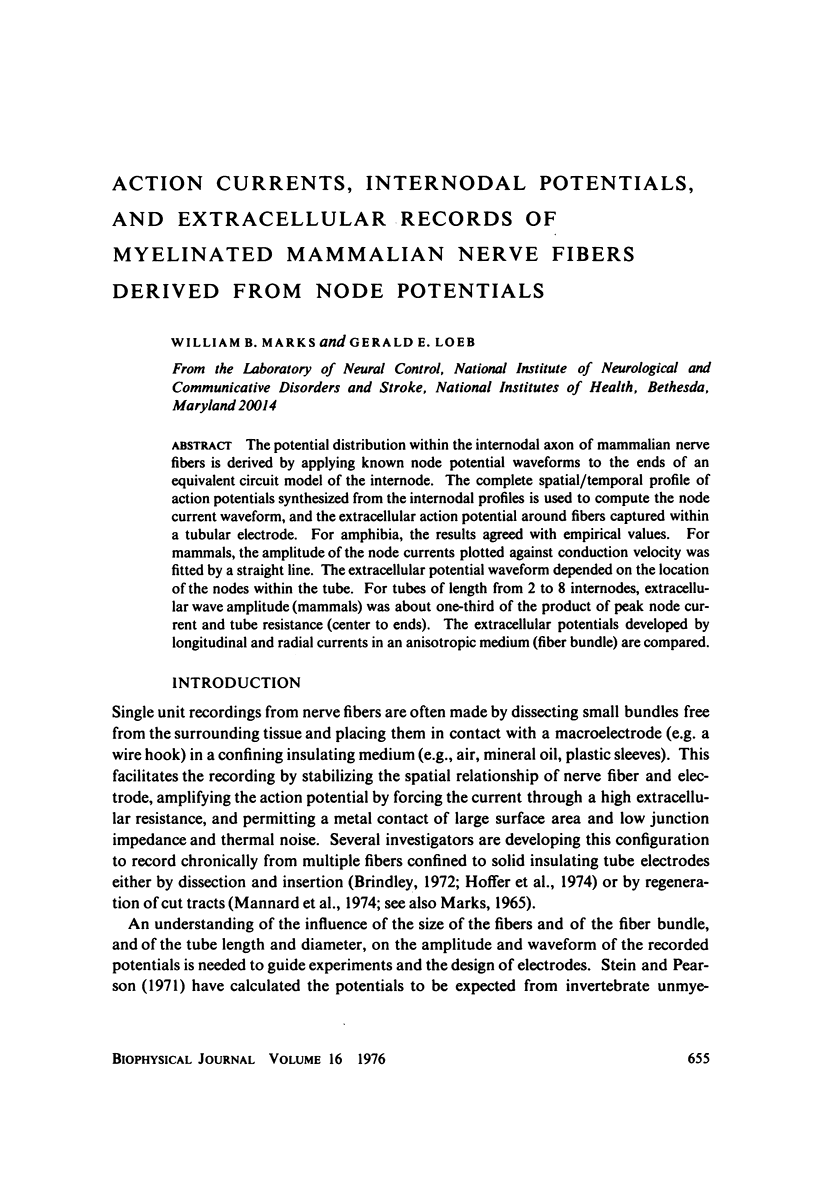

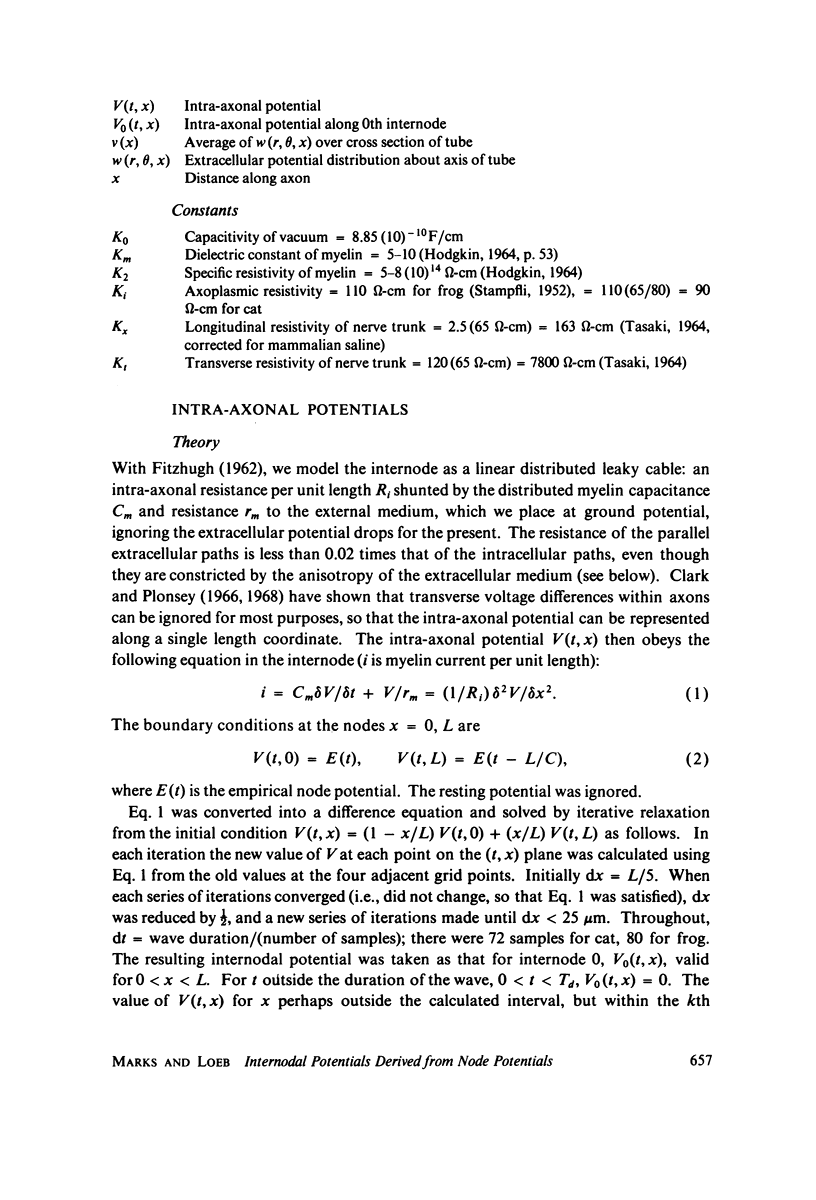
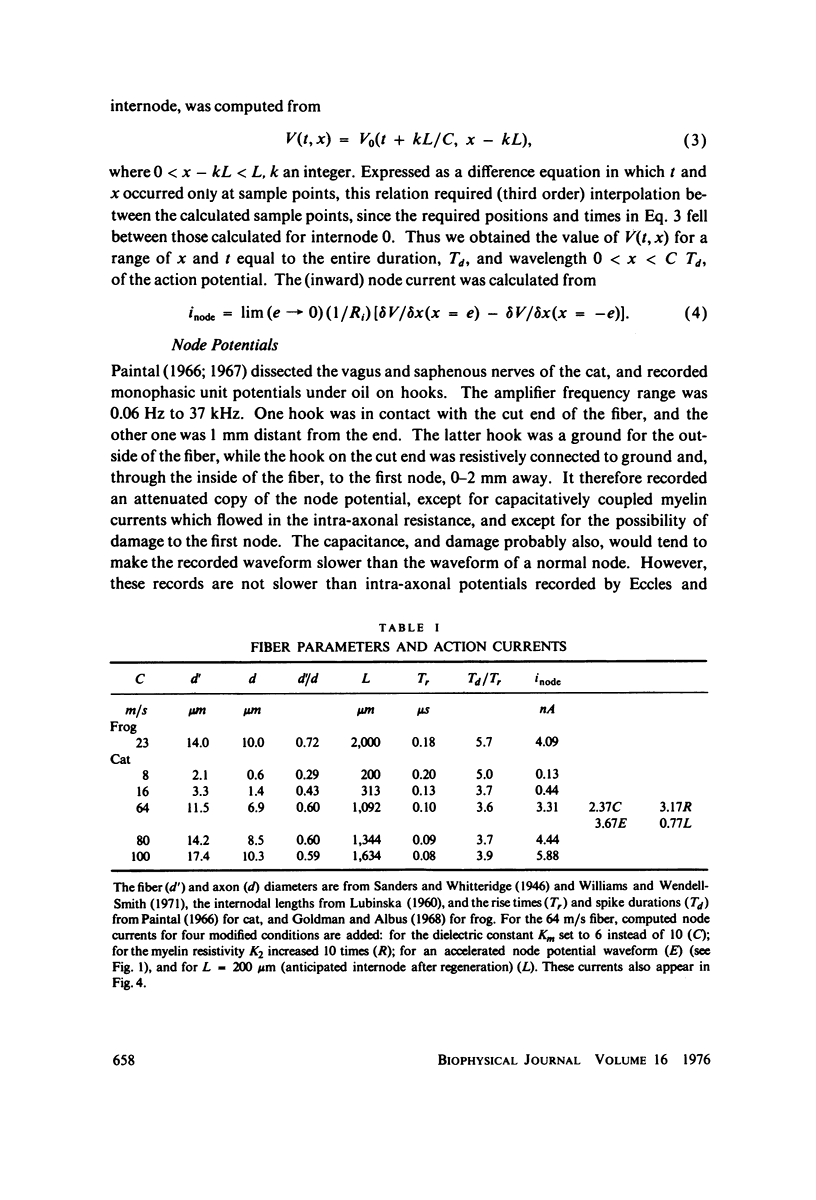
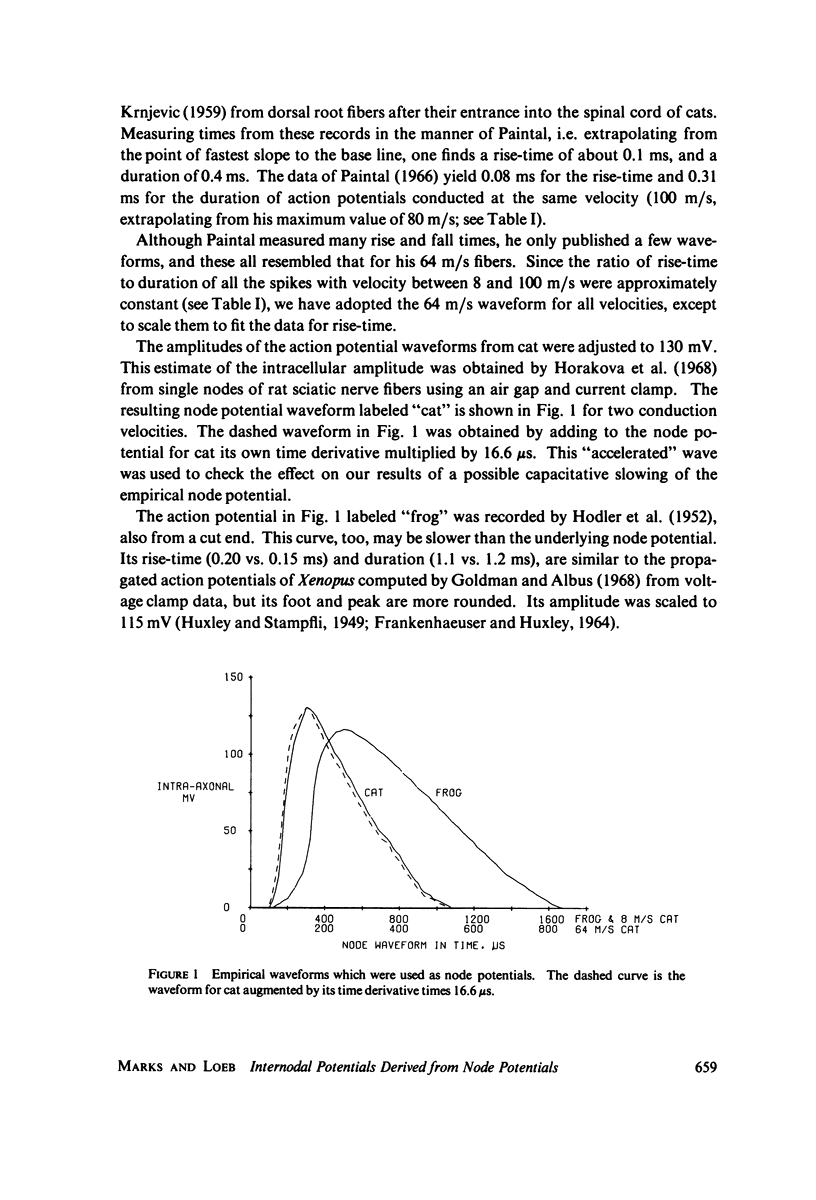
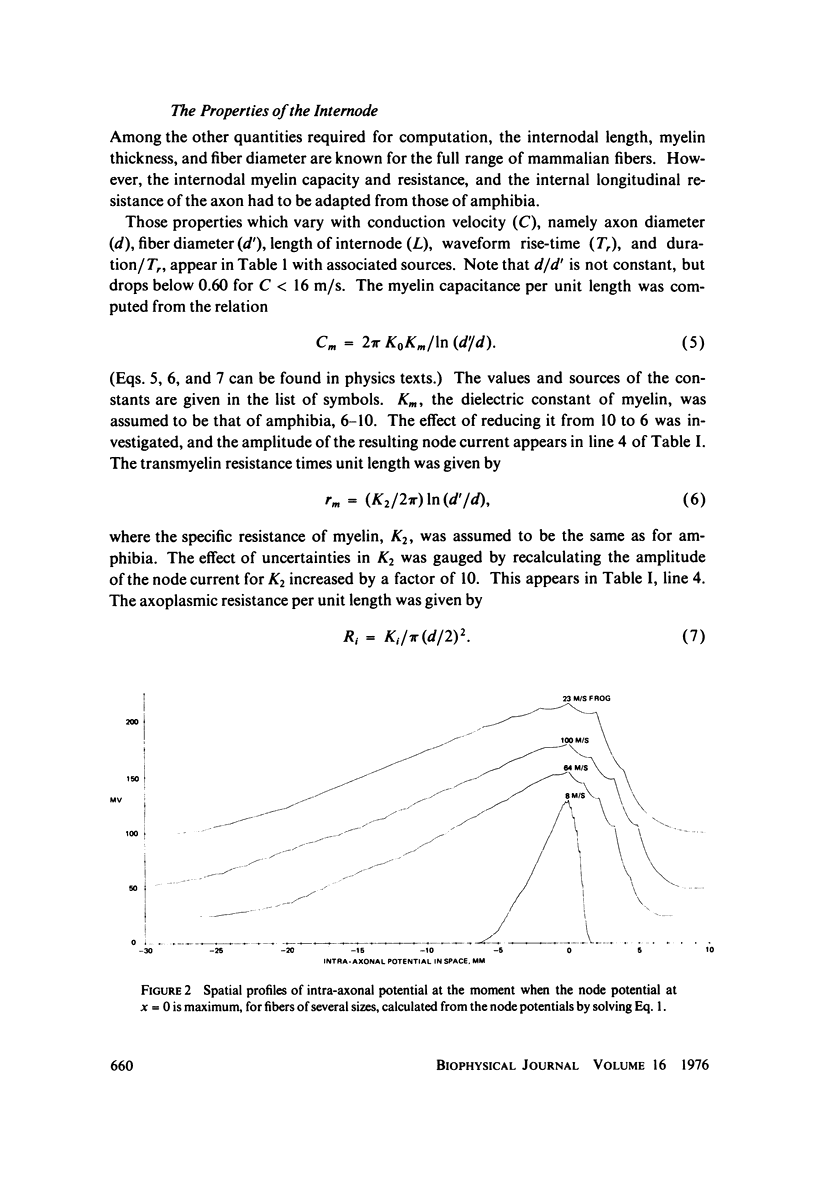
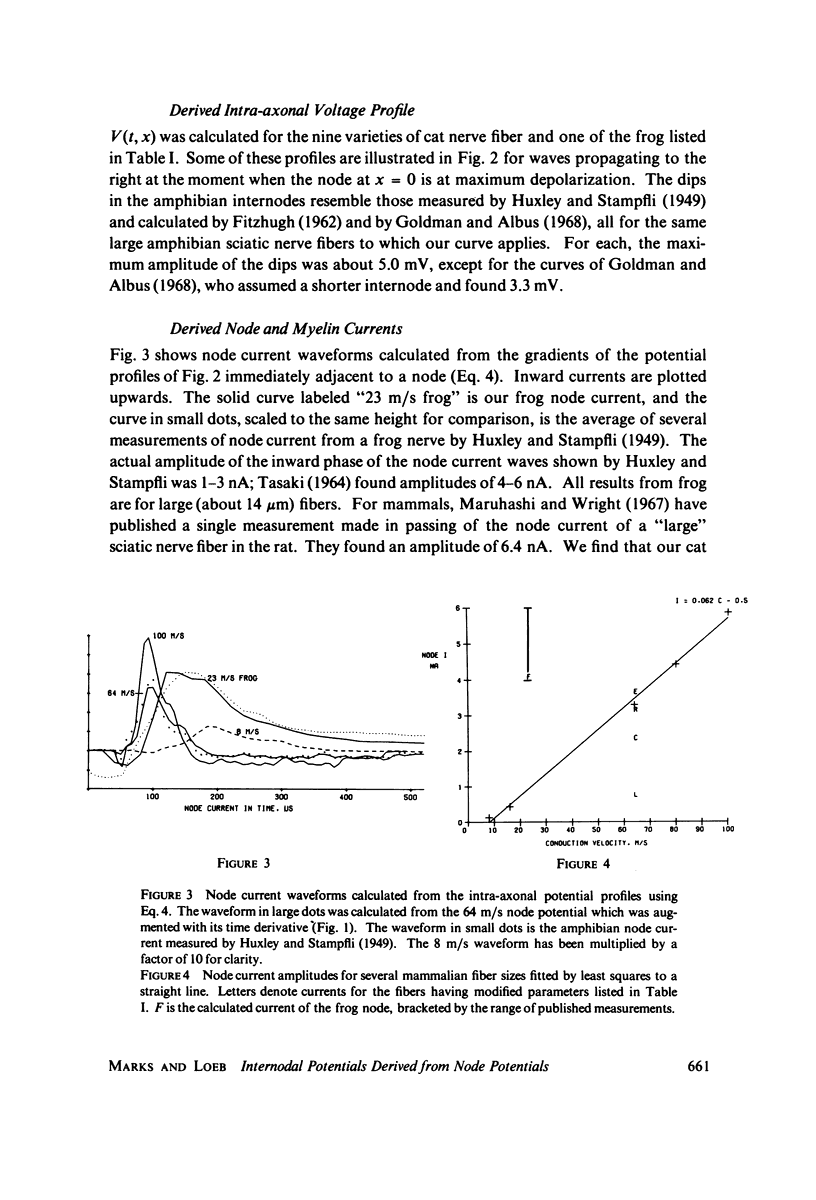
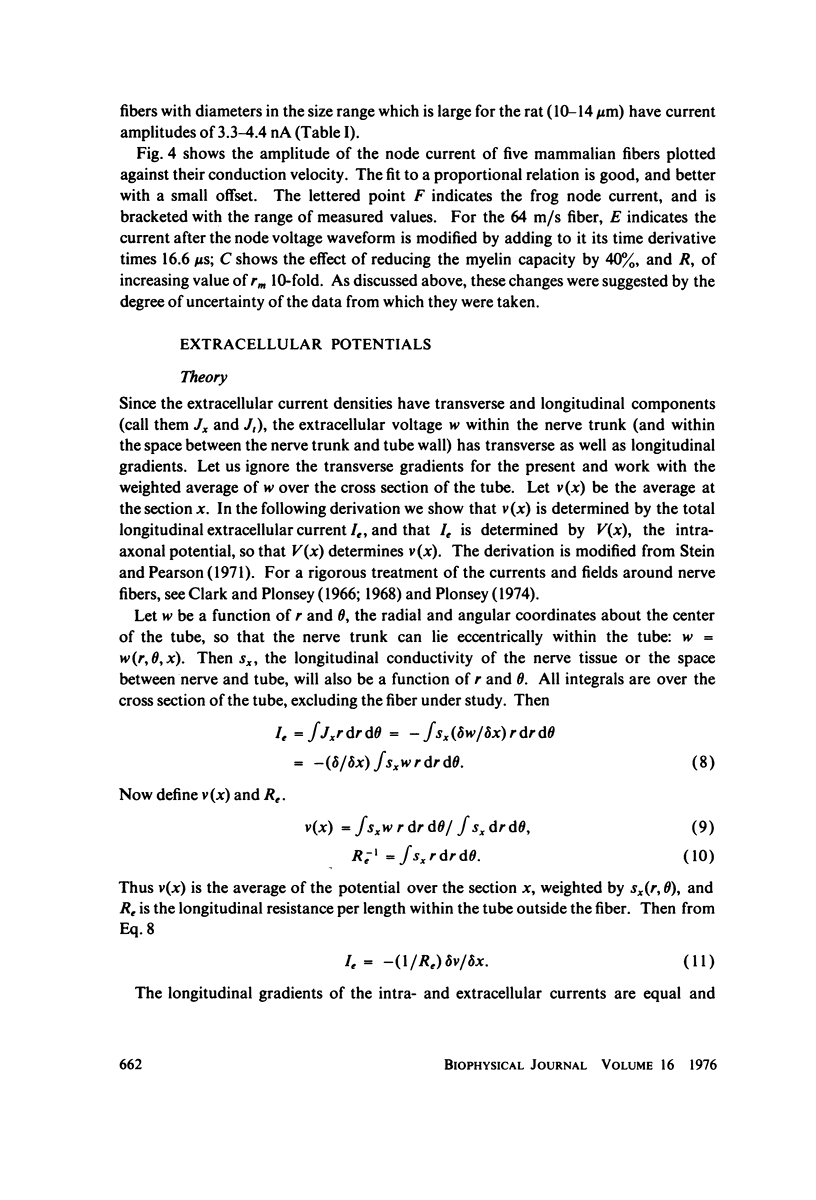
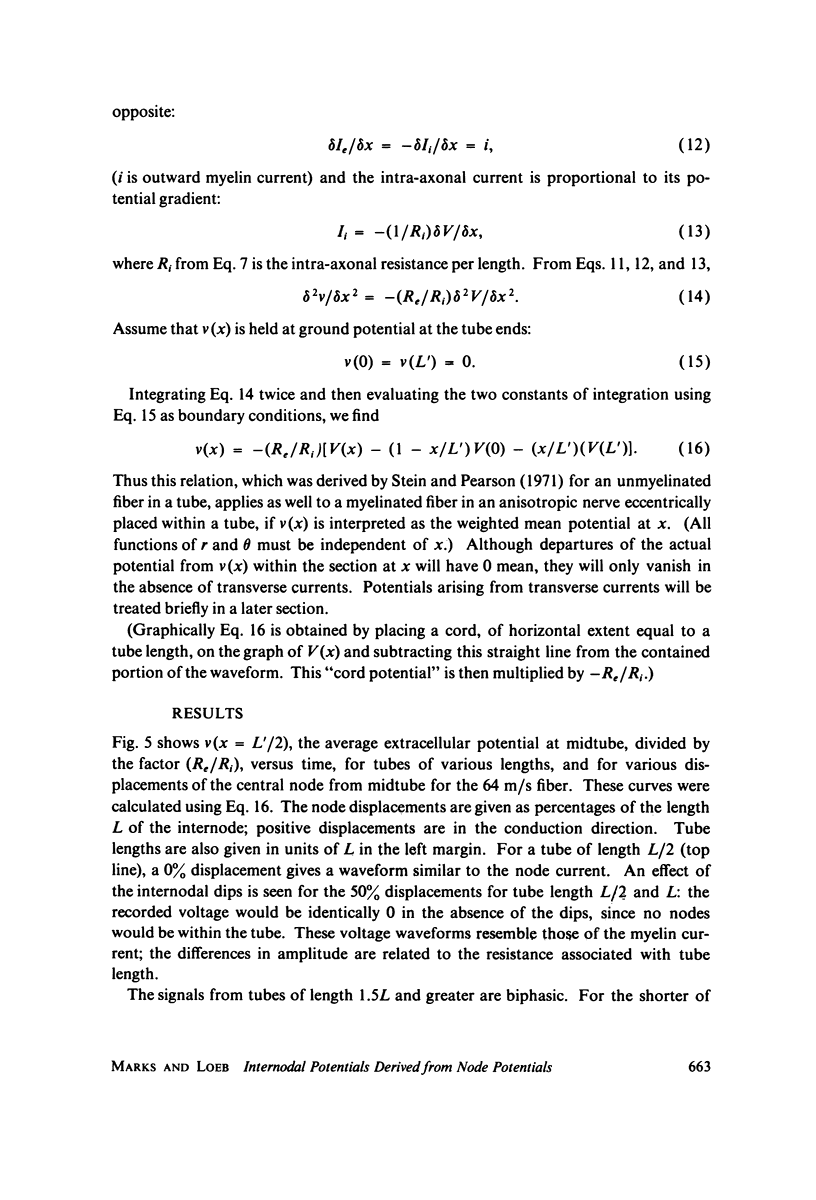
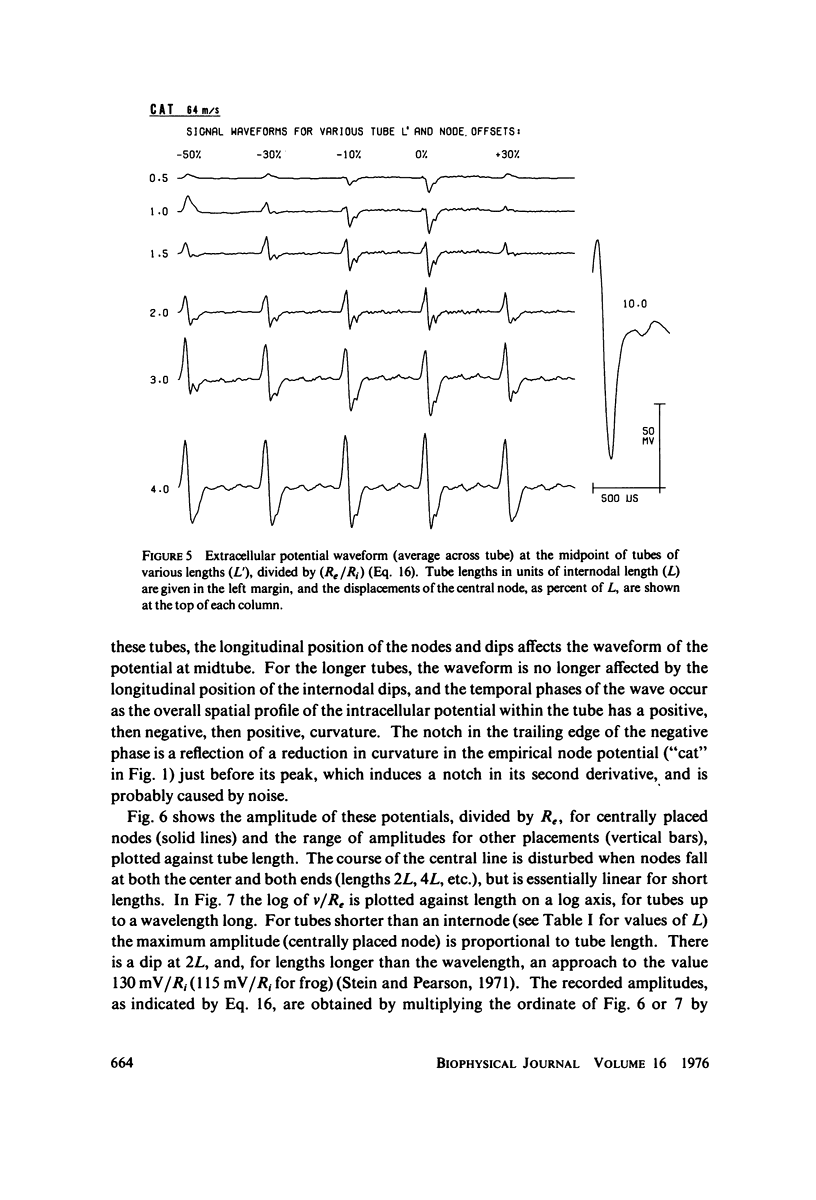
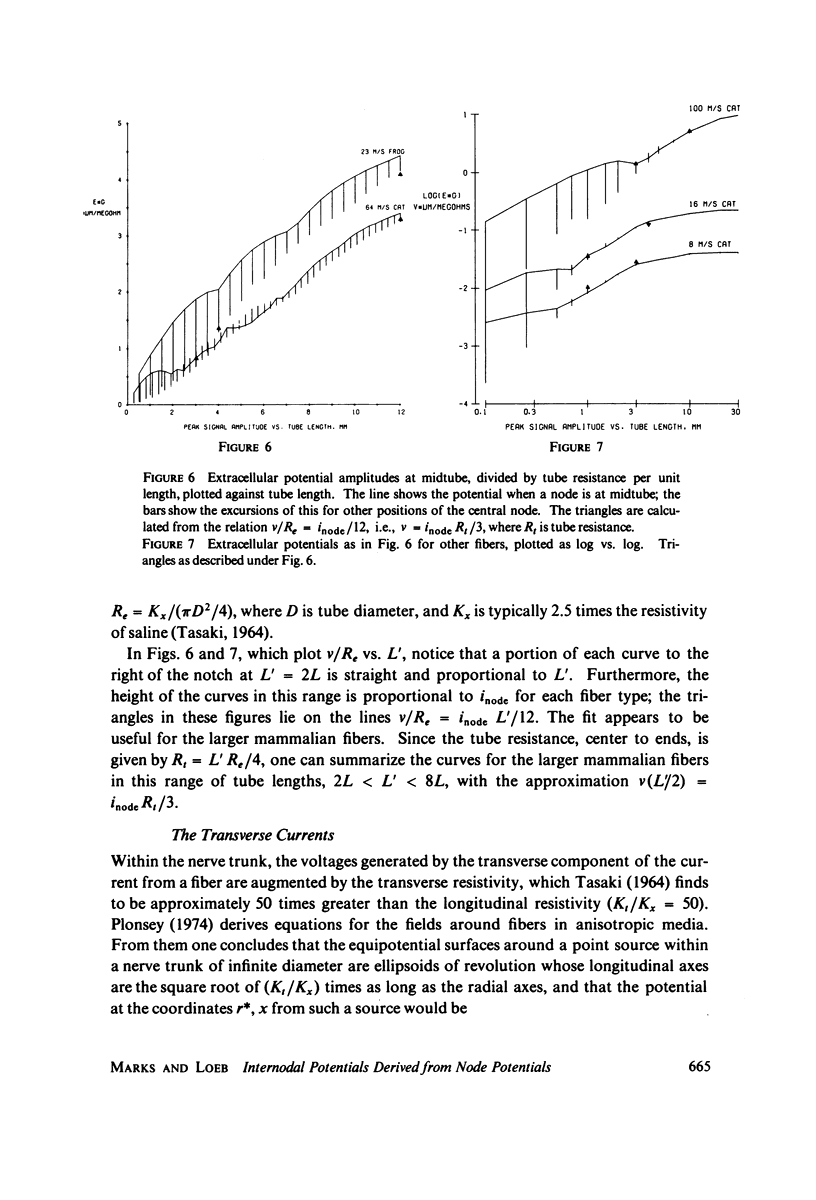
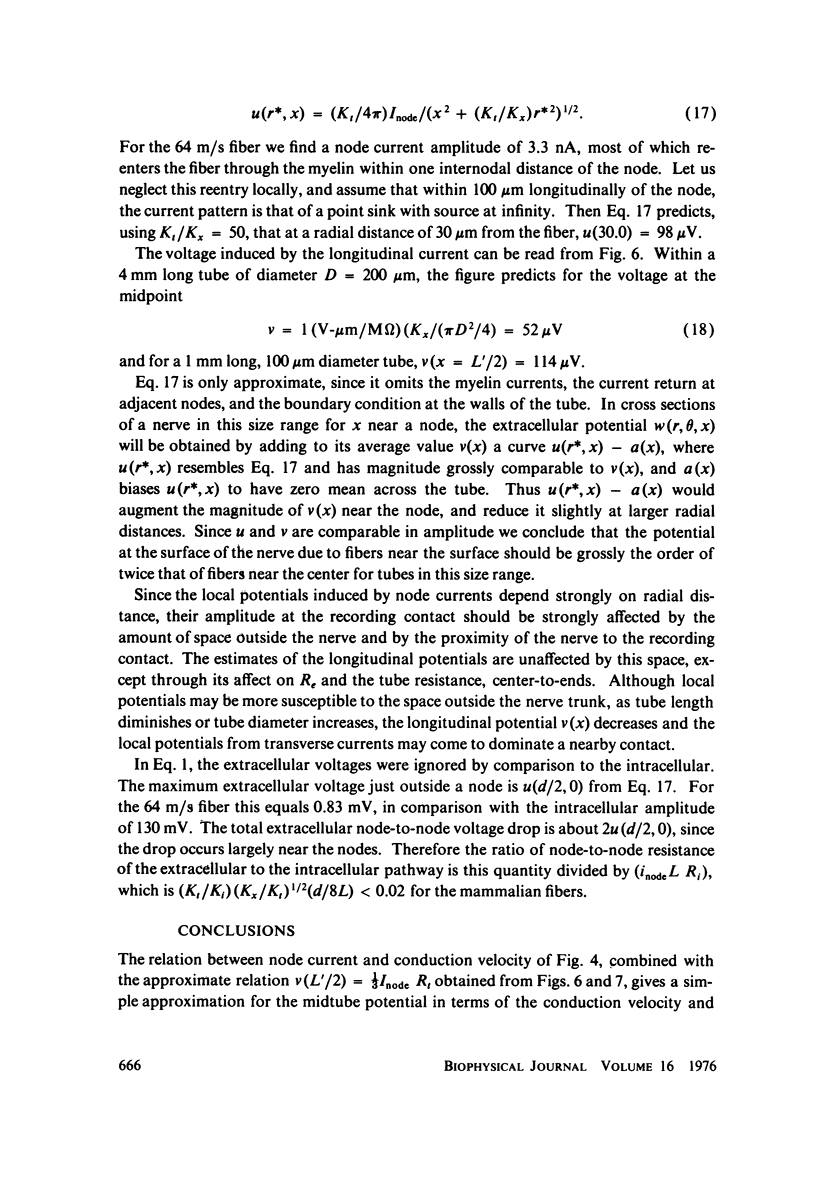
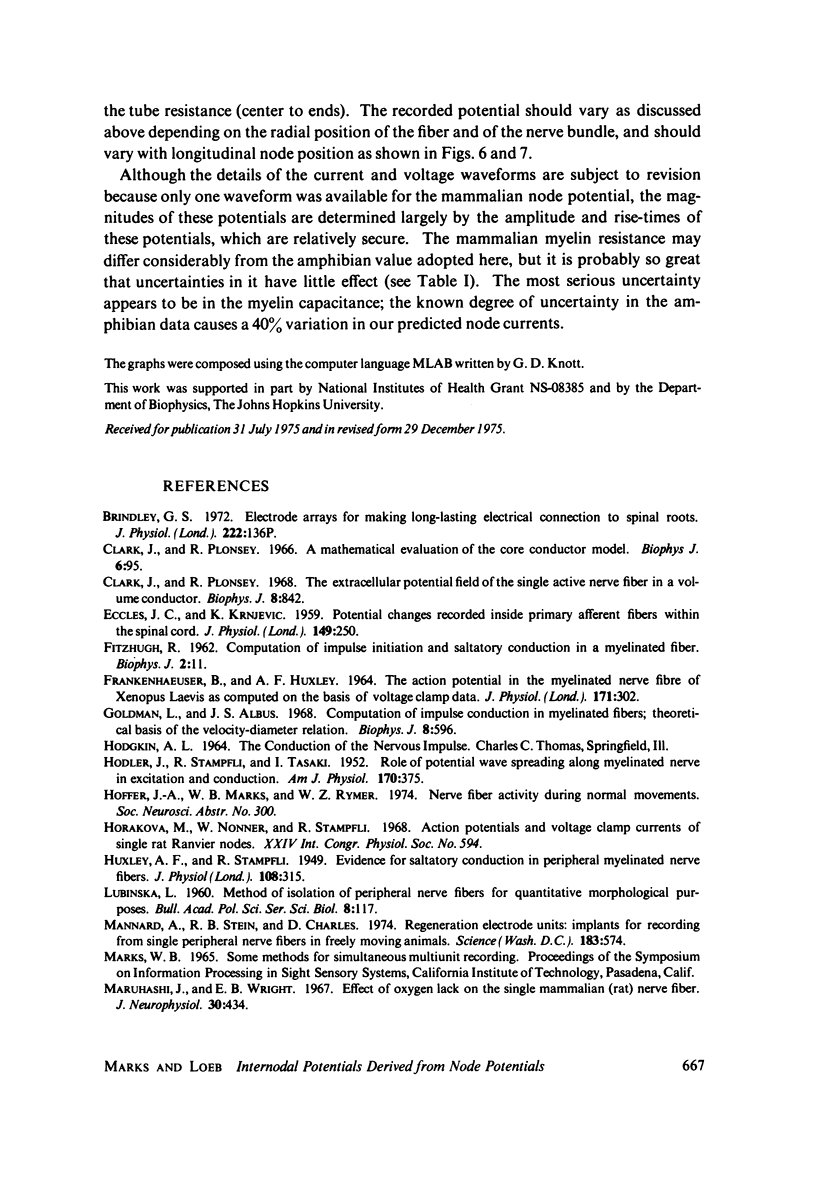
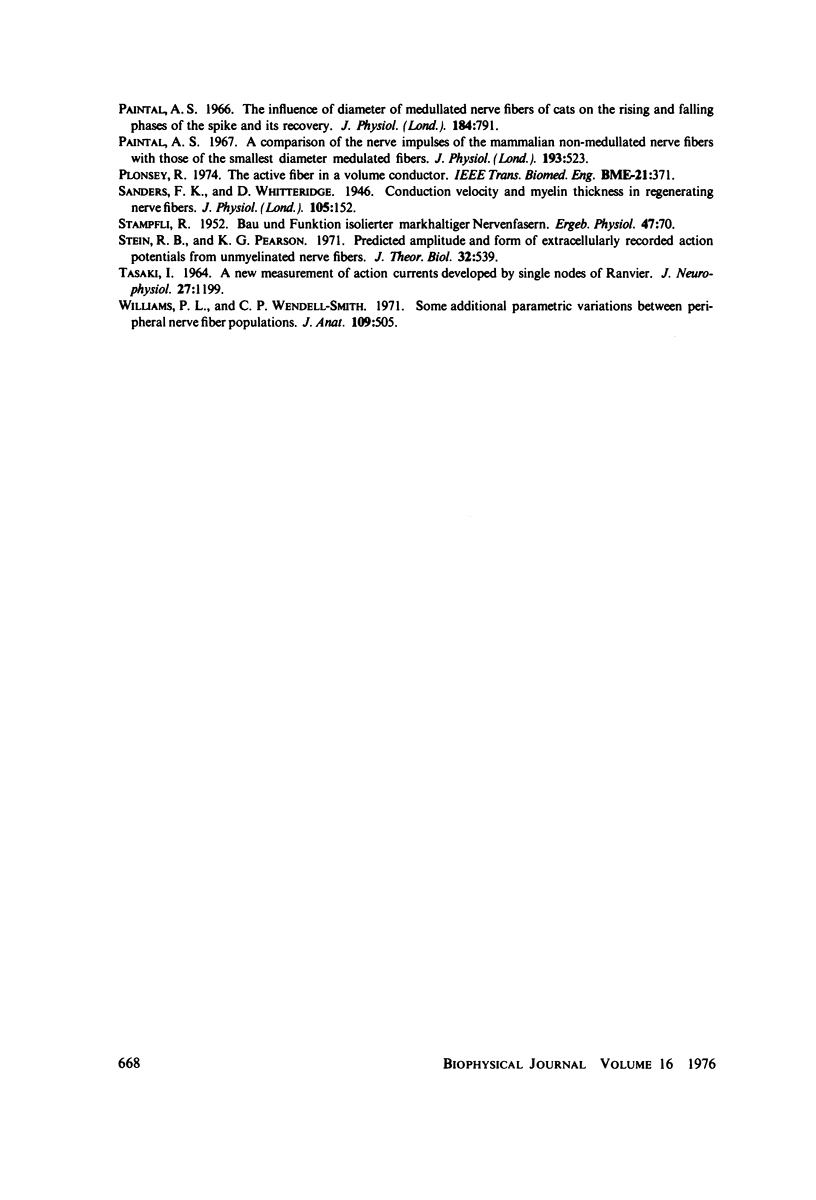
Selected References
These references are in PubMed. This may not be the complete list of references from this article.
- Brindley G. S. Electrode-arrays for making long-lasting electrical connexion to spinal roots. J Physiol. 1972 Apr;222(2):135P–136P. [PubMed] [Google Scholar]
- Clark J., Plonsey R. A mathematical evaluation of the core conductor model. Biophys J. 1966 Jan;6(1):95–112. doi: 10.1016/S0006-3495(66)86642-0. [DOI] [PMC free article] [PubMed] [Google Scholar]
- Clark J., Plonsey R. The extracellular potential field of the single active nerve fiber in a volume conductor. Biophys J. 1968 Jul;8(7):842–864. doi: 10.1016/S0006-3495(68)86524-5. [DOI] [PMC free article] [PubMed] [Google Scholar]
- ECCLES J. C., KRNJEVIC K. Potential changes recorded inside primary afferent fibres within the spinal cord. J Physiol. 1959 Dec;149:250–273. doi: 10.1113/jphysiol.1959.sp006338. [DOI] [PMC free article] [PubMed] [Google Scholar]
- FITZHUGH R. Computation of impulse initiation and saltatory conduction in a myelinated nerve fiber. Biophys J. 1962 Jan;2:11–21. doi: 10.1016/s0006-3495(62)86837-4. [DOI] [PMC free article] [PubMed] [Google Scholar]
- FRANKENHAEUSER B., HUXLEY A. F. THE ACTION POTENTIAL IN THE MYELINATED NERVE FIBER OF XENOPUS LAEVIS AS COMPUTED ON THE BASIS OF VOLTAGE CLAMP DATA. J Physiol. 1964 Jun;171:302–315. doi: 10.1113/jphysiol.1964.sp007378. [DOI] [PMC free article] [PubMed] [Google Scholar]
- Goldman L., Albus J. S. Computation of impulse conduction in myelinated fibers; theoretical basis of the velocity-diameter relation. Biophys J. 1968 May;8(5):596–607. doi: 10.1016/S0006-3495(68)86510-5. [DOI] [PMC free article] [PubMed] [Google Scholar]
- HODLER J., STAMPFLI R., TASAKI I. Role of potential wave spreading along myelinated nerve fiber in exictation and conduction. Am J Physiol. 1952 Aug;170(2):375–389. doi: 10.1152/ajplegacy.1952.170.2.375. [DOI] [PubMed] [Google Scholar]
- Huxley A. F., Stämpfli R. Evidence for saltatory conduction in peripheral myelinated nerve fibres. J Physiol. 1949 May 15;108(3):315–339. [PMC free article] [PubMed] [Google Scholar]
- Maruhashi J., Wright E. B. Effect of oxygen lack on the single isolated mammalian (rat) nerve fiber. J Neurophysiol. 1967 May;30(3):434–452. doi: 10.1152/jn.1967.30.3.434. [DOI] [PubMed] [Google Scholar]
- Paintal A. S. A comparison of the nerve impulses of mammalian non-medullated nerve fibres with those of the smallest diameter medullated fibres. J Physiol. 1967 Dec;193(3):523–533. doi: 10.1113/jphysiol.1967.sp008376. [DOI] [PMC free article] [PubMed] [Google Scholar]
- Plonsey R. The active fiber in a volume conductor. IEEE Trans Biomed Eng. 1974 Sep;21(5):371–381. doi: 10.1109/TBME.1974.324406. [DOI] [PubMed] [Google Scholar]
- STAMPFLI R. Bau und Funktion isolierter markhaltiger Nervenfasern. Ergeb Physiol. 1952;47:70–165. [PubMed] [Google Scholar]
- Sanders F. K., Whitteridge D. Conduction velocity and myelin thickness in regenerating nerve fibres. J Physiol. 1946 Sep 18;105(2):152–174. [PMC free article] [PubMed] [Google Scholar]
- Stein R. B., Pearson K. G. Predicted amplitude and form of action potentials recorded from unmyelinated nerve fibres. J Theor Biol. 1971 Sep;32(3):539–558. doi: 10.1016/0022-5193(71)90155-x. [DOI] [PubMed] [Google Scholar]
- TASAKI I. A NEW MEASUREMENT OF ACTION CURRENTS DEVELOPED BY SINGLE NODES OF RANVIER. J Neurophysiol. 1964 Nov;27:1199–1206. doi: 10.1152/jn.1964.27.6.1199. [DOI] [PubMed] [Google Scholar]
- Williams P. L., Wendell-Smith C. P. Some additional parametric variations between peripheral nerve fibre populations. J Anat. 1971 Sep;109(Pt 3):505–526. [PMC free article] [PubMed] [Google Scholar]


